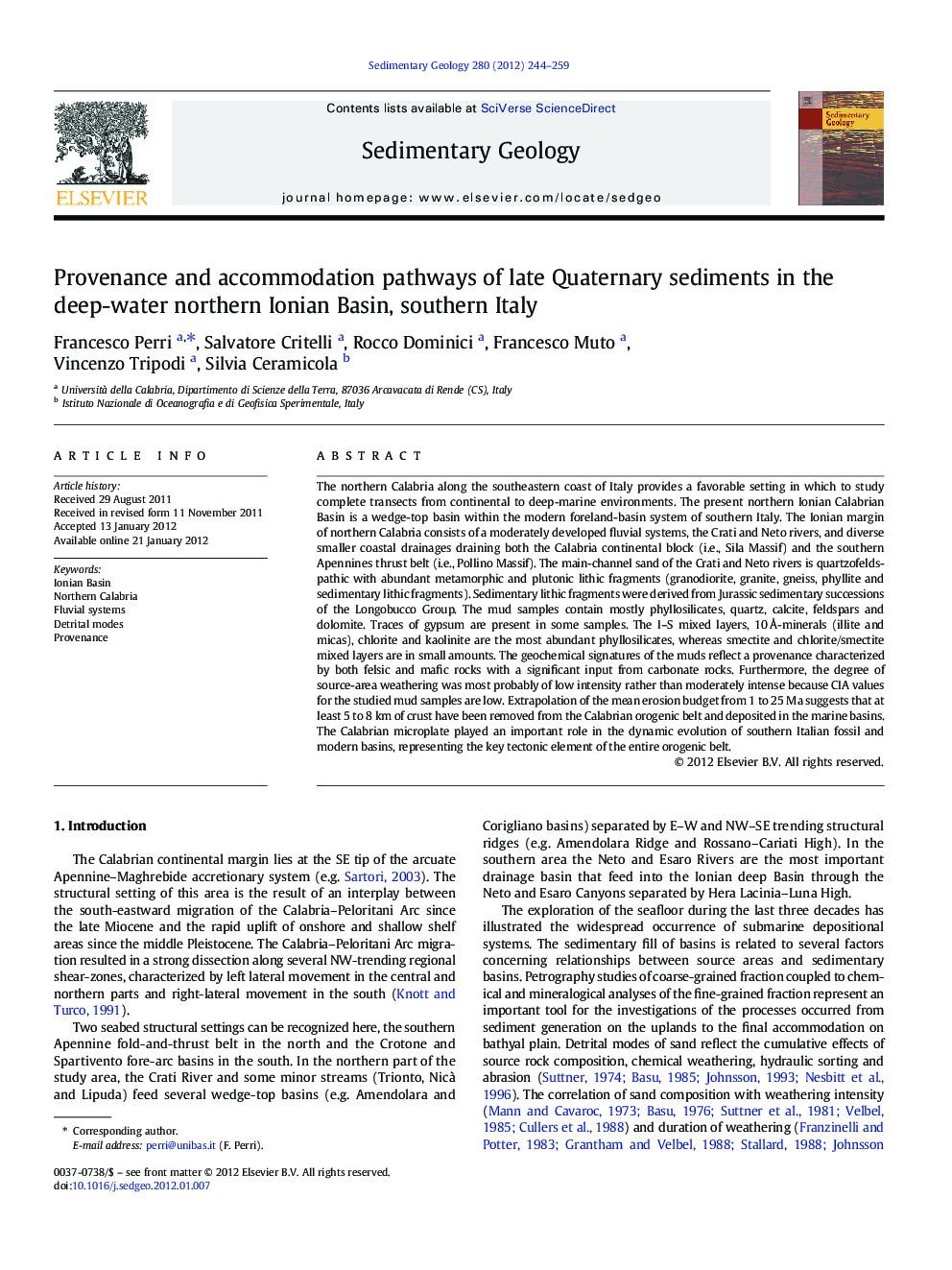| کد مقاله | کد نشریه | سال انتشار | مقاله انگلیسی | نسخه تمام متن |
|---|---|---|---|---|
| 4689669 | 1636081 | 2012 | 16 صفحه PDF | دانلود رایگان |

The northern Calabria along the southeastern coast of Italy provides a favorable setting in which to study complete transects from continental to deep-marine environments. The present northern Ionian Calabrian Basin is a wedge-top basin within the modern foreland-basin system of southern Italy. The Ionian margin of northern Calabria consists of a moderately developed fluvial systems, the Crati and Neto rivers, and diverse smaller coastal drainages draining both the Calabria continental block (i.e., Sila Massif) and the southern Apennines thrust belt (i.e., Pollino Massif). The main-channel sand of the Crati and Neto rivers is quartzofeldspathic with abundant metamorphic and plutonic lithic fragments (granodiorite, granite, gneiss, phyllite and sedimentary lithic fragments). Sedimentary lithic fragments were derived from Jurassic sedimentary successions of the Longobucco Group. The mud samples contain mostly phyllosilicates, quartz, calcite, feldspars and dolomite. Traces of gypsum are present in some samples. The I–S mixed layers, 10 Å-minerals (illite and micas), chlorite and kaolinite are the most abundant phyllosilicates, whereas smectite and chlorite/smectite mixed layers are in small amounts. The geochemical signatures of the muds reflect a provenance characterized by both felsic and mafic rocks with a significant input from carbonate rocks. Furthermore, the degree of source-area weathering was most probably of low intensity rather than moderately intense because CIA values for the studied mud samples are low. Extrapolation of the mean erosion budget from 1 to 25 Ma suggests that at least 5 to 8 km of crust have been removed from the Calabrian orogenic belt and deposited in the marine basins. The Calabrian microplate played an important role in the dynamic evolution of southern Italian fossil and modern basins, representing the key tectonic element of the entire orogenic belt.
Journal: Sedimentary Geology - Volume 280, 1 December 2012, Pages 244–259